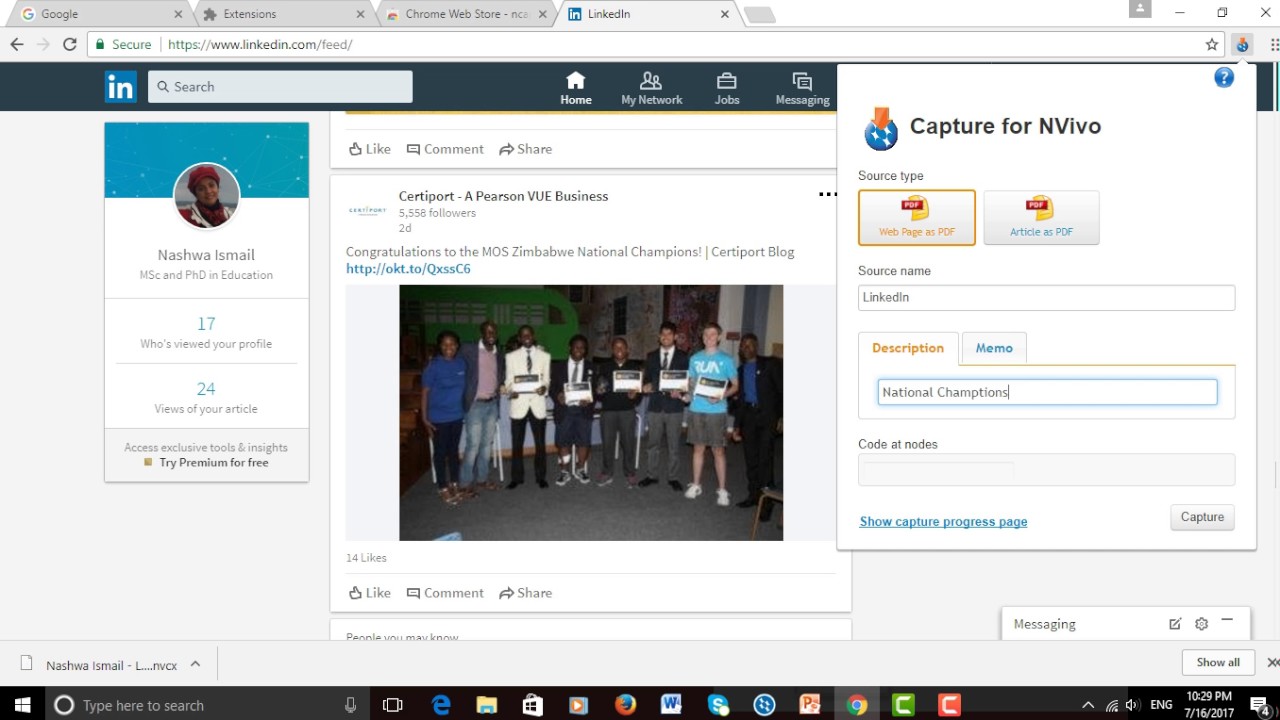About coding


A code in qualitative research is a word or phrase that summarises or captures the essence of a portion of data.
Hi, I have done a manual transcription of my interviews in NVivo 12. After making sure I was saving my work - and backed it up- I opened my project again the day after to find out that there were no text attached to my audio file. The text I inputted manually is nowhere to be found (same think on. P.4 3 Summary p.6 p.8 p.14 p.14 p.16 p.18 p.20 p.12 Each NVivo project has a database for the documents you create or import. Documents can be created, browsed and edited at any stage in. Download NVivo 12. NVivo is a qualitative data analysis application that allows you to collect, organise, analyse and visualise unstructured or semi-structured data. WIth NVivo you can import data in a range of file formats, organise demographic data, code sources, capture ideas, run queries and visualise project items.
In this video, a mixture of basic- and intermediate-level features of the NVivo 12 Pro for Windows qualitative analysis software suite are presented using sa. Example 1: Fred Smith uses QSR International’s NVivo 12 software. Example 2: John Citizen used QSR International’s NVivo 12 qualitative data analysis software. A Citation may be written in the same way as a reference to a book publisher (note, there is no need to repeat material contained within the body text).
Coding is the analytical process of categorising data.
In NVivo, coding is the process of gathering related material into a container called a Node. When you open a node, you can see all the references in the project coded to the node.
There are several types of codes in NVivo. Theme nodes are codes that represent the themes or topics that you find in your data. Relationships record the connection between two project items. Sentiment codes are positive and negative nodes created by auto coding of sentiment.
NVivo supports deductive (pre-set coding scheme, often based on emerging themes from a literature review) and inductive (codes generated while examining the collected data) approaches to coding.
How to code in NVivo
Deductive coding
If you are taking a deductive approach, you will have a list of pre-defined codes and want to create nodes for these and then code your sources to the relevant node.


To create a New Node:
- From the Create tab, select Node.
- In the New Node dialog box, enter a Name and Description (optional) for the node. If the node name is very long, you can create a Nickname which will be shorter and quicker to use in the quick coding bar.
- To incorporate reference from child nodes within the parent node, select the Aggregate coding from children checkbox.
- Select a Color to specify the colour of coding stripes (optional).
- Click OK.
Nvivo 12 Manual Download

To code to an existing Node:
- Select the unit of text you want to code in the data file
- Click on the text, then drag and drop it over the required node.
Inductive coding
If you are taking an inductive approach to coding, you attach codes to units of data as you analyse your files. To do this in NVivo:
Nvivo 12 Manual Instructions
- Select Nodes in Navigation view.
- Select the unit of text you want to code in the source item, then drag and drop it into List View, over the prompt “Drag selection here to code to a new node”
- In the New Node dialog box, enter a name and description (optional).
- Click OK.
The following video demonstrates different ways of coding in NVivo: